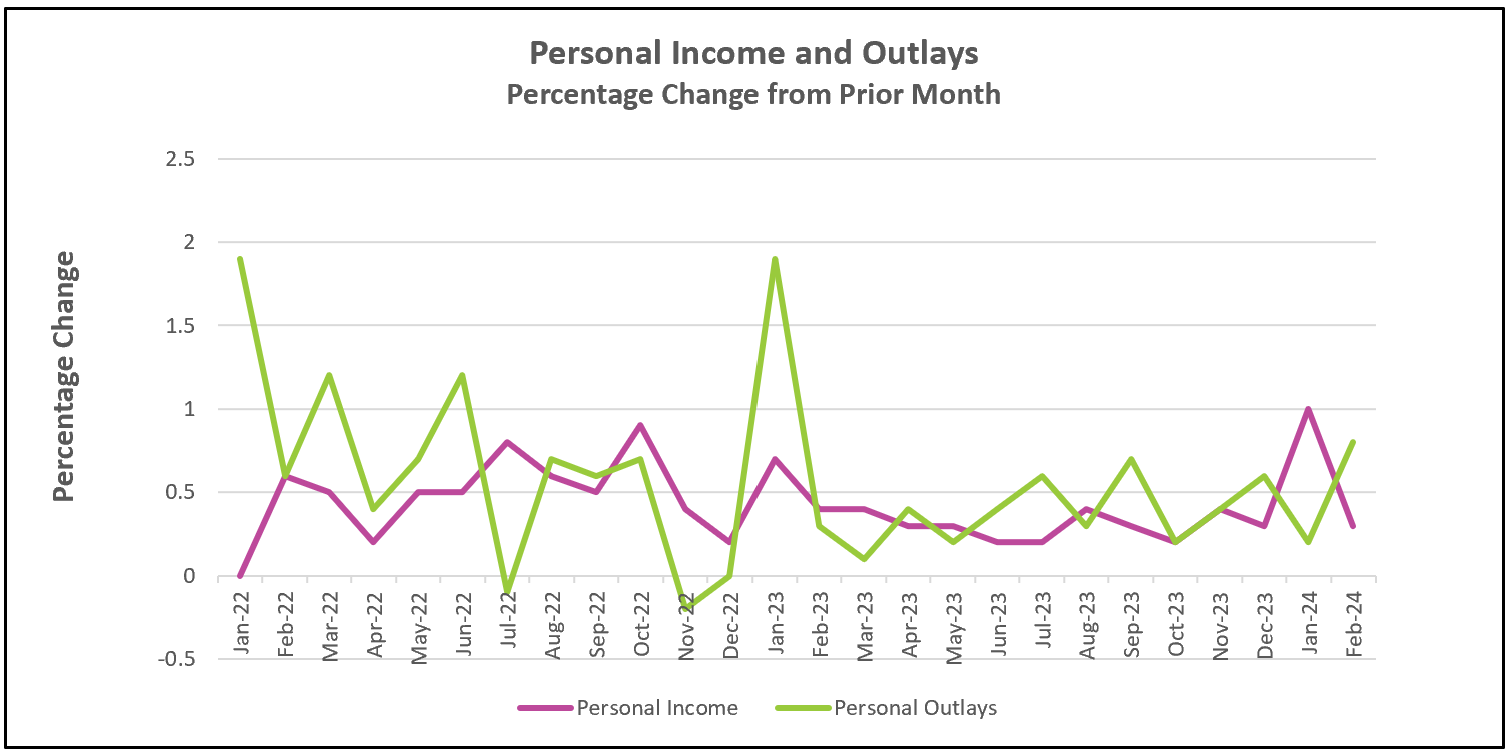
The Bureau of Economic Analysis released their report Personal Income and Outlays – February 2024. Here are the key findings:

Policymakers preferred inflation gauges, the core price indexes, continued their gradual deceleration. Nevertheless, a notable uptick in energy prices nudged the all-inclusive rate higher. Economists prefer core indexes when evaluating trends because they exclude volatile food and energy prices. In the latest report, the monthly core index dipped from 0.5% to 0.3%, while the 12-month index moderated from 2.9% to 2.8%.
Continued increases in wages and salaries supported growth in consumer spending. Wages and salaries increased by 0.8%, the largest jump since the beginning of last year. This wage increase provided the financial impetus for a consumer spending surge of 0.8%. Although spending on goods experienced a decline in three out of the last four months, it rebounded with a 0.5% increase in February. Conversely, consumers have consistently elevated their expenditures for services, with spending rising by 0.5% or more in each of the preceding six months. This trend persisted in February, with a notable 0.9% increase.
Businesses may hesitate to maintain price stability if consumers persist in spending, particularly if a surge in demand leads to shortages. However, the pivotal question remains: will consumers sustain their spending momentum? Despite the rise in wages, February’s decrease in interest and dividend income resulted in a 0.1% decline in disposable personal income after inflation adjustments. Sustainable spending growth hinges on household income keeping pace, unless households opt to reduce savings. In February, the savings rate, measured as a percentage of disposable income, stood at 3.6%, marking the lowest rate since the fourth quarter of 2022.
Policymakers have indicated they will begin lowering their benchmark rate later this year. The economy’s resilience will assure them that high interest rates will not likely push the economy into a recession soon. However, this sentiment might also postpone their decision to initiate rate cuts until additional evidence indicates inflation will continue decelerating.
Policymakers will closely monitor the Bureau of Labor Statistics’ Employment Situation report for March, scheduled for release on April 5th, to gauge the labor market’s resilience. A slight cooling in the labor market would be beneficial as it could alleviate inflationary pressures. Following its release, our comprehensive summary and analysis will be accessible on HigherRockEducation.org.